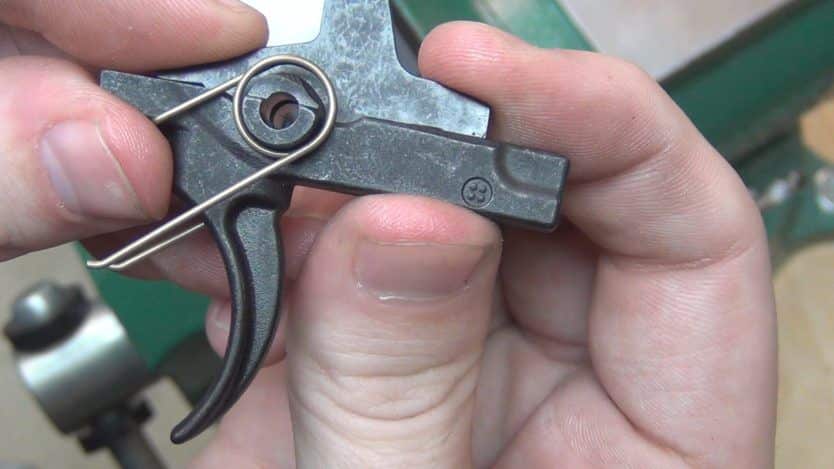Our rifle build is shaping up, no? If you’ve finished with the pivot pin, let’s get that trigger installed. For reference, check the video embedded in this post (the time stamp below will jump you to the corresponding point in the vid) and the post where I laid out all the tools and components I’m using for this build.
(10:50) Step 5 – Trigger
I think you might be surprised at how easy installing a trigger is on an AR-15. All you will need for this step is the trigger, trigger spring, trigger pin, disconnector, disconnector spring and a 5/32″ roll pin punch.
A little warning for you to consider as you get started: During the installation process of the trigger, do not, under any circumstances, allow the hammer to fall under spring tension against the bolt catch. This could crack your lower receiver. An AR-15 hammer should only be dry-fired with a bolt carrier group installed, or when you have your hand in front of it allowing it to hit your hand rather than the bolt catch.

Now that that’s out of the way, let’s get that trigger into the AR-15 lower receiver. Position the lower receiver in the vise block like you had it at the beginning of this build. Start off by placing the trigger spring onto the trigger. Just place each side of the spring onto the “shoulder” of the trigger. When you drop the trigger into the trigger opening of the receiver, the legs of the spring should be curved under and facing towards the front of the receiver.
Now take the disconnector spring, and place it into the trigger in the circular area that is cut out for it. Make sure that the big end of the disconnector spring is down in the trigger and the smaller end is facing up. If you have to, use a punch to push it down so it seats properly. Place the disconnector on top of the disconnector spring so the holes in the side of it line up with the holes in the trigger when you push it downward against the disconnector spring.

Make sure that the trigger retaining pin is flush with the receiver on both sides. You can test the trigger for proper function by pulling it and making sure there is spring tension and that the disconnector moves with the trigger. Now that we have that all finished up, we can go over installing the hammer.


